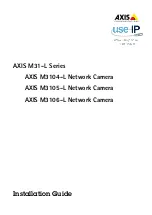
Page
12
Set
Baud
Rate
Word
Size
Stop
Bits
Parity
Select 3), from the Serial Port Configuration Menu
changes the Word
Size,
Default is 8
Select 4), from the Serial Port Configuration Menu
changes the Stop Bits,
Default is 1
Select baud rate:
1 For 300
2 For 600
3 For 1200
4 For 2400
5 For 4800
6 For 9600
7 For 19200
8 For 38400
9 For 57.6K
A For 76.8K
B For 115.2K
Enter Request :
Select 2), from the Serial Port Configuration Menu
changes the transfer rate of
Data bits per second for the serial port,
Default is 9600
The word size is the measurement of the actual data bits in a transmission. Which setting you choose
depends on what information you are transferring. For example, standard ASCII has values from 0 to
127 (7 bits). Extended ASCII uses 0 to 255 (8 bits). If the data being transferred is simple text
(standard ASCII), sending 7 bits of data per packet is sufficient for communication. A packet refers
to a single byte transfer, including start/stop bits, data bits, and parity.
The Stop Bits are used to signal the end of communication for a single packet. Since the data is
clocked across the lines and each device has its own clock, it is possible for the two devices to
become slightly out of sync. Therefore, the stop bits not only indicate the end of transmission but
also give the computers some room for error in the clock speeds. The more bits that are used for stop
bits, the greater the lenience in synchronizing the different clocks, but the slower the data
transmission rate.
Parity is a simple form of error checking used in serial communication. For even and odd parity, the
serial port will set the parity bit (the last bit after the data bits) to a value to ensure that the
transmission has an even or odd number of logic high bits. For example, if the data was 011, then for
even parity, the parity bit would be 0 to keep the number of logic high bits even. If the parity was odd,
then the parity bit would be 1, resulting in 3 logic high bits. This allows the receiving device to know
the state of a bit so as to enable the device to determine if noise is corrupting the data or if the
transmitting and receiving devices' clocks are out of sync.
With no parity selected, it's assumed that there are other forms of checking that will detect any errors
in transmission. No parity also usually means that the parity bit can be used for data, speeding up
transmission. In modem-to-modem communication, the type of parity is coordinated by the sending
and receiving modems before the transmission takes place.
Select stop bits:
1 For 1
2 For 1.5
3 For 2
Enter Request :
Select word size:
1 For 5
2 For 6
3 For 7
4 For 8
Enter Request :



































